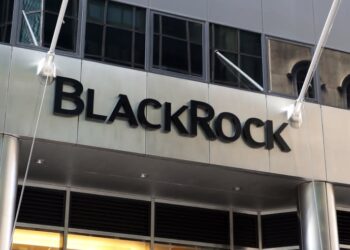The weaker-than-expected October CPI indicator suggests that inflation is tracking below the forecasts of the Reserve Bank of Australia (RBA), according to a number of top economists.
The monthly CPI indicator rose by 4.9 per cent in the 12 months to October, down from 5.6 per cent in September and below market expectations for a 5.2 per cent rise. Trimmed mean inflation also eased slightly, from 5.4 per cent in September to 5.3 per cent in October.
“Today’s data reduces the risk of an upside surprise to the Q4 23 CPI relative to the RBA’s inflation forecasts,” said Commonwealth Bank economist Stephen Wu.
According to the RBA’s November statement on monetary policy, both headline and trimmed mean annual inflation are forecast to ease to 4.5 per cent in Q4.
In light of the monthly CPI indicator, CBA currently expects that trimmed mean inflation will rise by 0.9 per cent during the Q4 to be 4.4 per cent higher over the year. This would be below the RBA’s expectations for a quarterly increase of approximately 1.0 per cent.
But Mr Wu also noted that just over one-third of the CPI basket was “imputed” and assumed to have no price change in October: “Many of these are market services, which is where the RBA’s concerns on the inflation front are skewed.
“The RBA governor’s concerns around services inflation, as noted in her recent speech – particularly prices at hairdressers and dentists, dining out, sporting, and other recreational activities, won’t see price updates until later in the quarter,” Mr Wu added.
In a speech to the Australian Business Economists annual dinner last week, Michele Bullock said that inflation is now homegrown and demand-driven, not solely the product of global supply disruptions, while warning that “getting inflation back to target will take time”.
Mr Wu predicted “substantial easing” in annual inflation over the remainder of this year with a “real chance” that the inflation rate begins with a three by December, since large monthly increases in November and December last year will fall out of the annual calculation.
“Assuming relatively large monthly increases over the rest of Q4 23 of around the 2022 average of 0.7 per cent, we will still see annual inflation print below 4 per cent,” he said.
“The quarterly CPI will show a higher figure because it captures the average over the quarter.”
HSBC chief economist Paul Bloxham said that the monthly headline CPI data appears to be tracking below the RBA’s most recent predictions.
“However, the trimmed mean did not fall quite as fast as implied by the central bank’s Q4 quarterly forecast. Of course, it’s early days, given that the central bank focuses more on the quarterly CPI, and given that the monthly CPI is experimental, volatile, and does not always fully line up with the quarterly figures,” he said.
“We expect the RBA to be on hold in December, although it would have taken a large upside surprise in today’s figures to have made a December move likely.”
Looking ahead, Mr Bloxham said that the latest underlying inflation figures suggest that another interest rate hike may be deemed necessary by the RBA in the first half of 2024.
“Although the downside surprise in the headline figures would suggest less likelihood of a hike. Our central case is that they will remain on hold in H1 2024,” he concluded.
ANZ senior economist Catherine Birch said the weak October CPI indicator increases the probability that Q4 headline inflation will print at or below the RBA’s forecast.
“But the November data, due 10 January, will be a better signal as it will capture prices for larger shares of non-tradables and services. We continue to see the RBA on hold in December,” she added.
While the RBA has become increasingly concerned about “homegrown” services inflation driven by consumer demand, AMP deputy chief economist Diana Mousina noted that the only major service measured in October was domestic and international holiday travel and accommodation.
According to the Australian Bureau of Statistics (ABS), holiday travel and accommodation rose 1.3 per cent in the 12 months to October, the lowest annual rise since February 2022 and down from the peak of 29.3 per cent in December 2022.
As part of her analysis, Ms Mousina noted that much has been said regarding Australia’s higher inflation data in comparison to its global peers.
“However, Australian inflation peaked ~6 months after our major peers, so it’s only natural that the decline in inflation is also occurring later than our peers. We expect that inflation will fall faster than the RBA is forecasting over the next six months,” she concluded.







